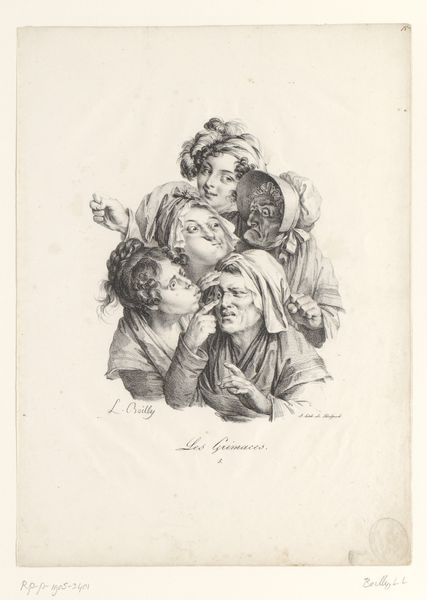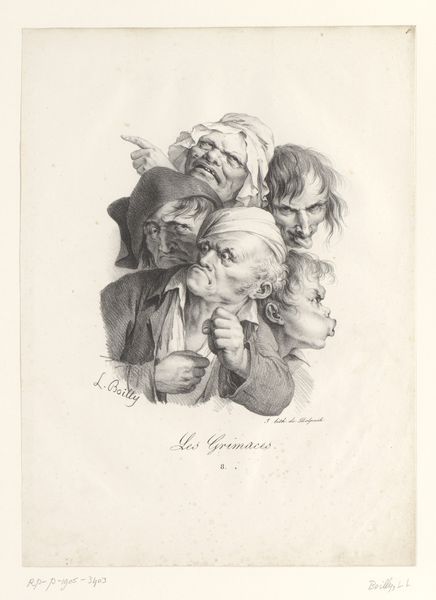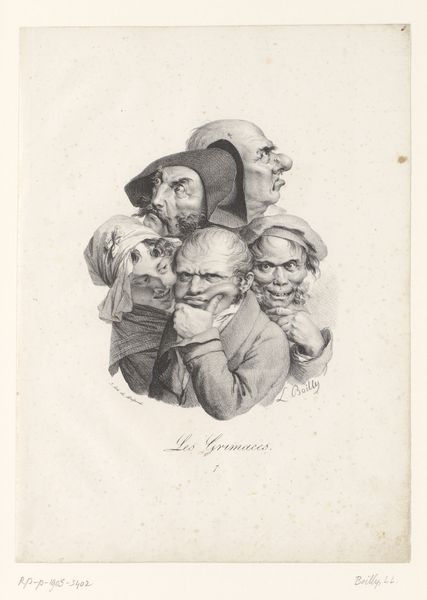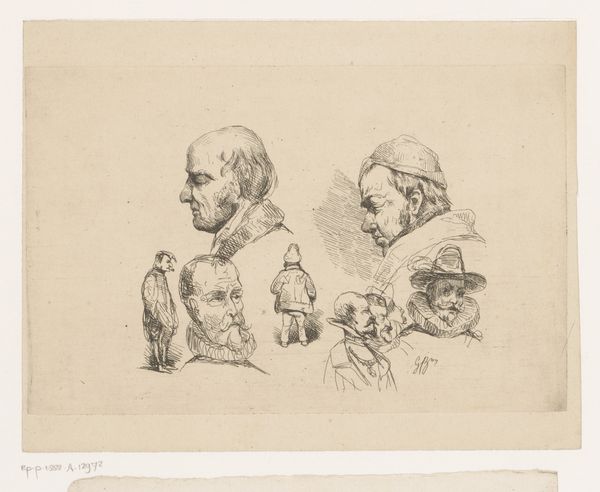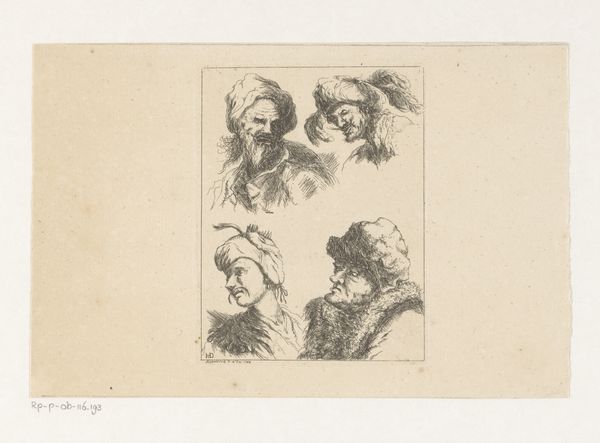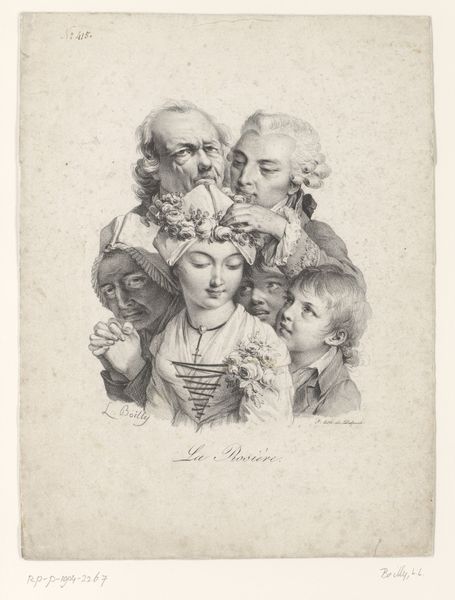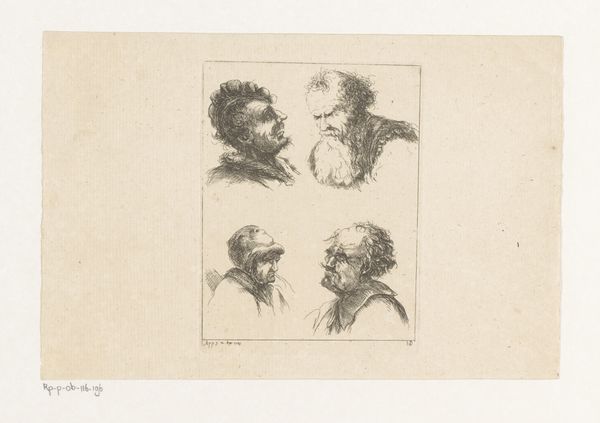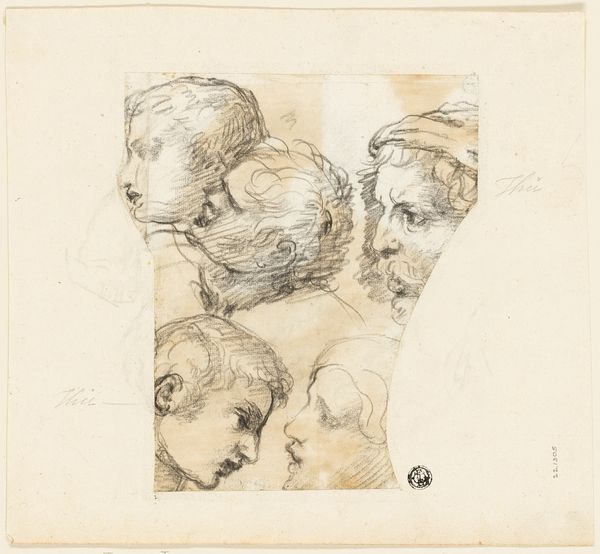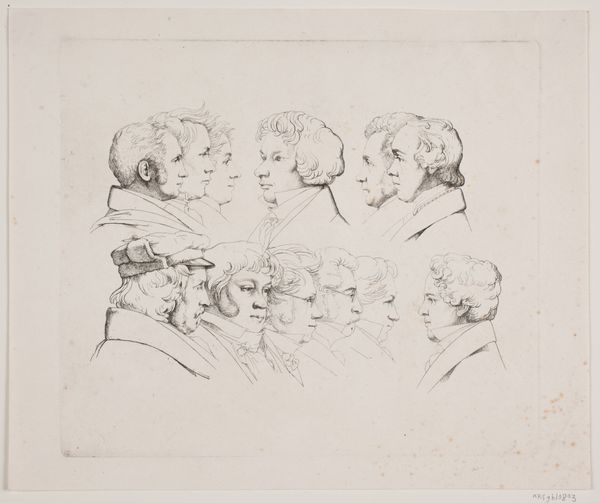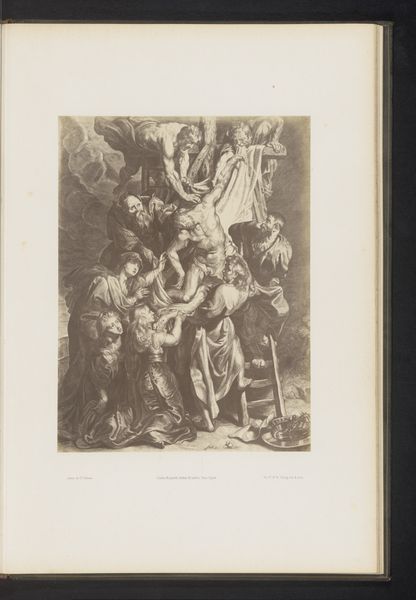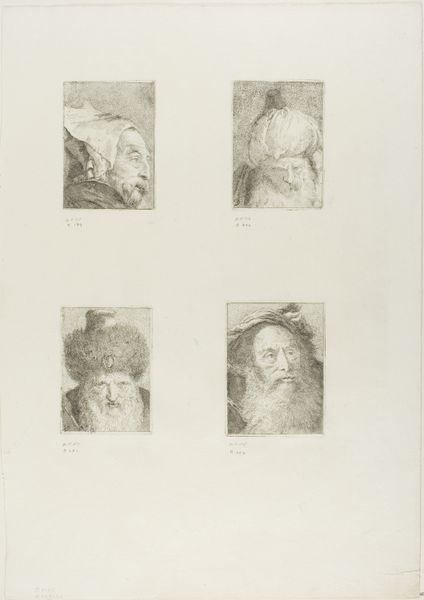
drawing, pencil
#
portrait
#
pencil drawn
#
drawing
#
neoclacissism
#
16_19th-century
#
caricature
#
pencil sketch
#
pencil
#
pencil work
#
genre-painting
#
realism
Dimensions: height 345 mm, width 255 mm
Copyright: Rijks Museum: Open Domain
Curator: Welcome! We're looking at Louis Léopold Boilly's 1823 drawing, "Caricature of five men with different facial expressions," created using pencil. What do you make of it? Editor: It’s…intense. A tightly packed cluster of grotesque expressions, all rendered with remarkable precision given the chaotic feeling. There's almost a competitive edge in how each face tries to outdo the other in terms of ugliness or, at least, exaggeration. Curator: Boilly was working during a time of significant social upheaval following the French Revolution, where artistic expression often reflected everyday life and the realities of the common person. I wonder how the production of such drawings might challenge the grand history painting dominating fine arts? Editor: Yes, it seems Boilly delights in distorting the accepted heroic and ideal forms prescribed by Neoclassicism, even as the technique echoes it, to an extent. Consider the linework, mimicking classical portraiture while undermining its ideals by dwelling on such base emotional displays. Curator: There’s something subversive here. These exaggerated expressions could symbolize the turbulent political climate, with the grotesque faces mirroring the anxieties and disaffections bubbling beneath the surface of post-revolutionary French society. Were these types of images sold commercially? What type of person was buying them? Editor: Fascinating question. From a purely visual standpoint, the composition is quite sophisticated. The arrangement leads the eye in a circular dance around the faces, from the puffed-up cheeks in the upper-center to the man on the left puckering his lips in an absurd manner, back up again. I mean, he almost turns the face into a landscape with valleys, crags, and bulbous outcrops. Curator: Considering his dedication to realism and genre painting, do you see Boilly attempting to represent, through these caricatures, a specific socio-economic group or perhaps offering a broader commentary on human nature as observed across different classes within Parisian society? How were individuals being represented at this time, by whom, and what material means were used in order to proliferate an ideology or self-conception? Editor: His mastery of pencil rendering allows a range of textures, from smooth skin to the wrinkled fabric of the men’s coats, all meticulously captured. It almost gives an objective reality to these phantasmagorical faces. Curator: These are complex pieces, born from a volatile society transitioning into the modern era. They make one question not only aesthetic tastes but what those tastes signify. Editor: Exactly! A dance of form and frenzy.
Comments
No comments
Be the first to comment and join the conversation on the ultimate creative platform.
